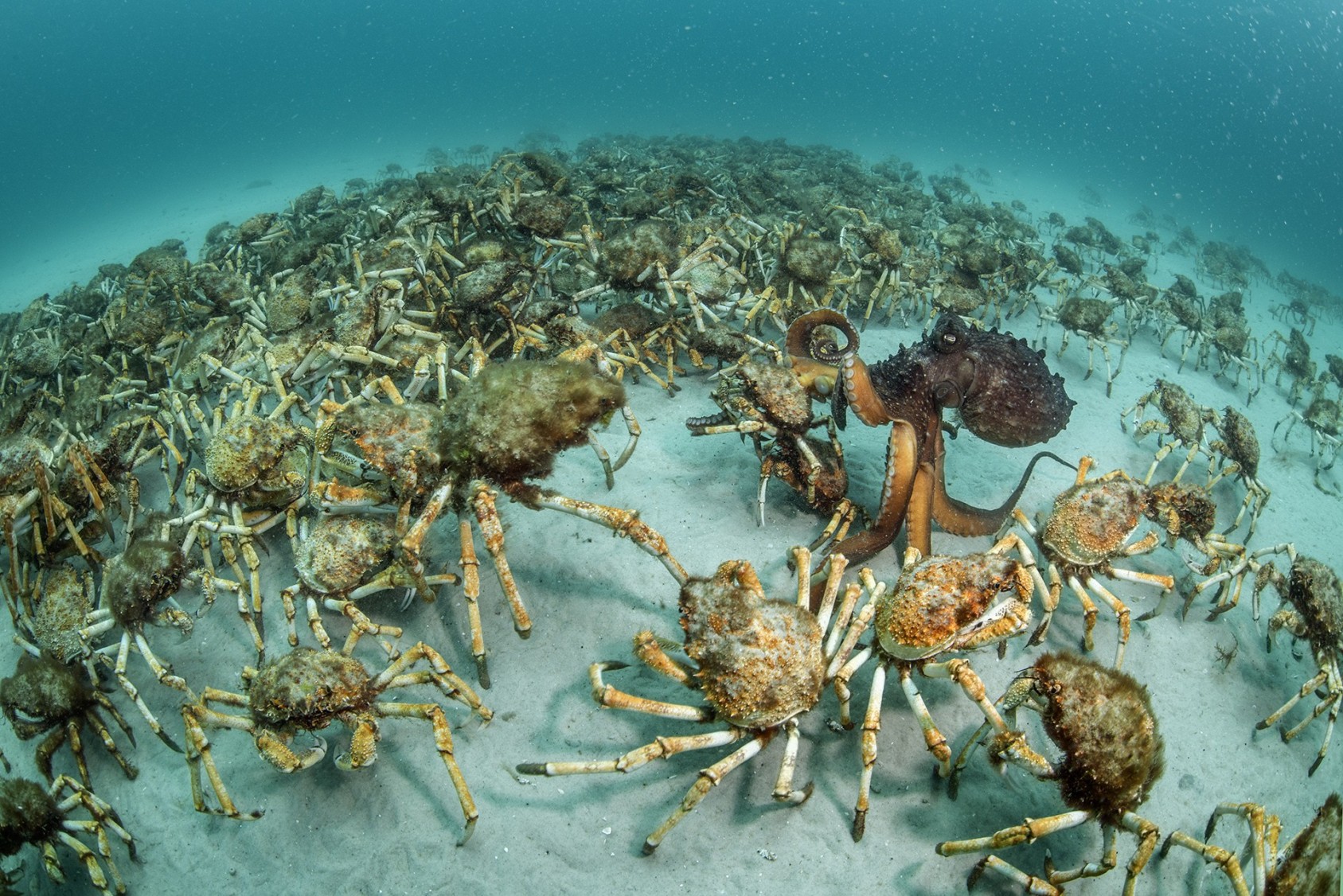
The Winners Of The NHM Wildlife Photography Awards
Crab surprise
Justin Gilligan, Australia
Winner 2017, Behaviour: Invertebrates
Nikon D810 + 15mm f2.8 lens; 1/100 sec at f14; ISO 400; Nauticam housing; two Ikelite DS161 strobes.
Out of the blue, an aggregation of giant spider crabs the size of a football field wandered past. Known to converge in their thousands elsewhere in Australian waters – probably seeking safety in numbers before moulting – such gatherings were unknown in Mercury Passage off the east coast of Tasmania. Justin was busy documenting a University of Tasmania kelp transplant experiment and was taken completely by surprise. A single giant spider crab can be hard to spot – algae and sponges often attach to its shell, providing excellent camouflage – but there was no missing this mass march-past, scavenging whatever food lay in their path on the sandy sea floor. ‘About 15 minutes later, I noticed an odd shape in the distance, moving among the writhing crabs,’ says Justin. It was a Maori octopus that seemed equally delighted with the unexpected bounty. Though large – the biggest octopus in the southern hemisphere, with muscular arms spanning up to 3 metres (10 feet) and knobbly, white-spotted skin – it was having trouble choosing and catching a crab. Luckily for Justin, the stage was set with clear water and sunlight reflecting off the sand. He quickly adjusted his camera and framed the octopus finally making its catch.